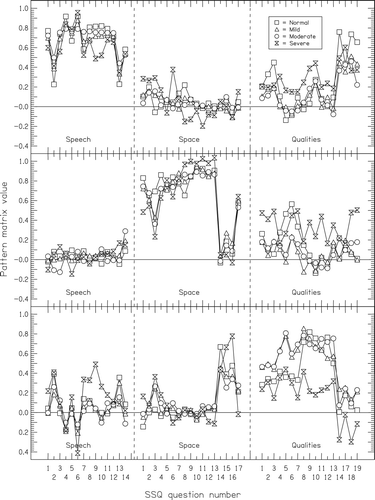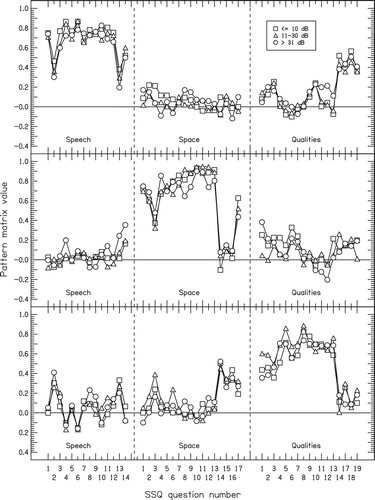Figures & data
Figure 1. Distributions of better-ear hearing loss (top panel) and age (bottom panel) for the 1220 participants. The hearing loss is calculated as the mean of the air-conduction hearing levels at 500, 1000, 2000, and 4000 Hz in a participant's better ear. They are grouped into 10-dB bins; age is grouped into decade bins. The hatchings mark the three groups of listeners.
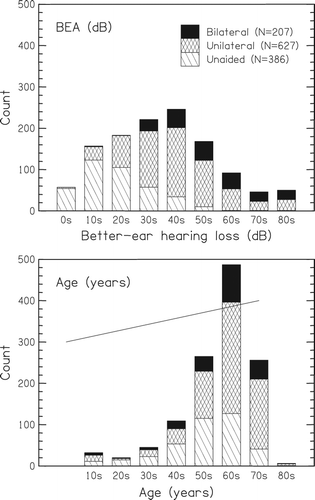
Table 1. The counts, age, and hearing losses of the three groups of listeners. The values are means with medians in brackets.
Figure 2. Distributions of the responses to each possible point on the SSQ scale across all 1220 participants times 48 questions. The three groups are for unaided listeners (n = 386), unilaterally aided (n = 627), and bilaterally aided (n = 207). Any non-integer (or half-integer) responses have been rounded to the nearest integer (or half integer).
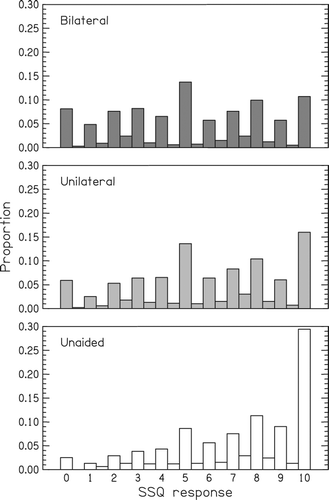
Figure 3. Mean SSQ score vs. better-ear hearing loss. The listeners are grouped by aiding configuration (top panel) or age (bottom panel). The score is the average response across the 48 SSQ questions considered here. In the top panel the error bars in the top-right corner illustrate the minimum, mean, and maximum standard deviations of the data points. See for the calculation of hearing loss.
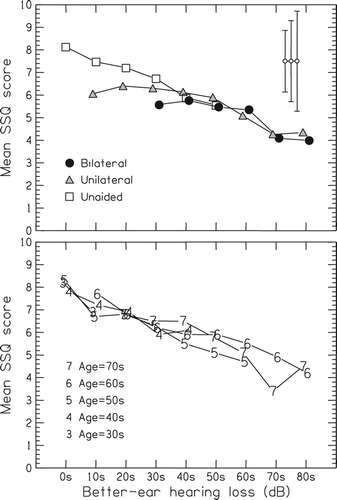
Figure 4. The results of the parallel analysis for determining the number of factors to retain. The circles plot the eigenvalues from the data; the asterisks from random distributions. The three panels are for the separate analyses for the three groups of listeners.
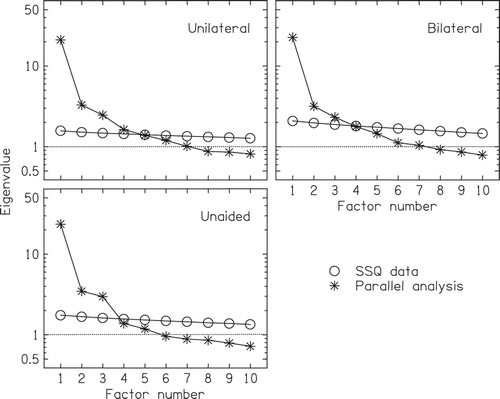
Table 2. Results of the factor analyses: amount of variance accounted for by each of the unrotated or rotated factors.
Table 3. Results of the factor analyses: Correlations of each rotated factor with each other.
Figure 6. The mean factor weightings for each of the three retained factors, after oblique rotation. The weightings are averaged across all the items in a particular section of the SSQ. The hatchings mark the three groups of listeners.

Figure 7. The factor weightings for each of the 48 SSQ items in each of the three factors. The symbols mark the three groups of listeners. The top panel shows the first rotated factor, named “Speech understanding”, the middle panel shows the second rotated factor, named “Spatial perception”, and the bottom panel shows the rotated factor, named “Clarity, separation, and identification”.

Figure 8. The squares of the average factor weights for each the 48 SSQ items. The symbols mark the three rotated factors. The weights are averaged across the three groups of listeners.
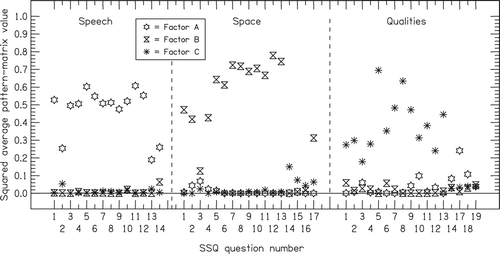
Table 4. Correlations of the equal-weighted scores (see equations 2–4) with various measures of hearing ability.


